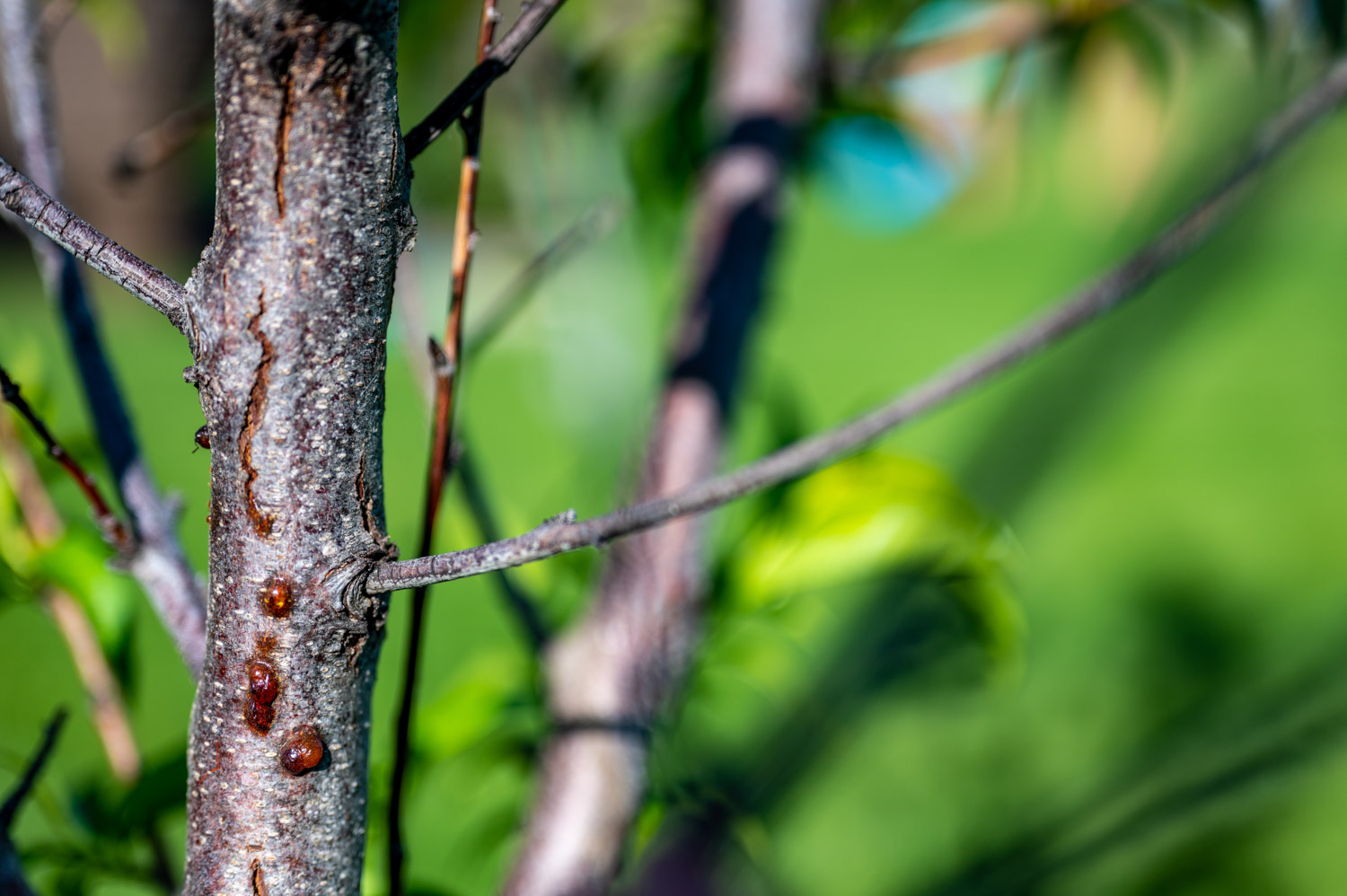
See all posts by this author

Photo courtesy of James Solomon, USDA Forest Service, Bugwood.org
Cherry borers, particularly the peachtree borer (Synanthedon exitiosa) and the lesser peachtree borer (Synanthedon pictipes), can be significant pests in cherry trees as well as peach trees. These borers attack the base and upper portions of the trunk, respectively, and can cause severe damage if left unchecked.
Of course, prevention and treatment of cherry and peach tree borers is included in a Plant Health Care subscription from Arborscapes. (As are myriad other pests and diseases) If you would like to become a part of our Plant Health Care program, reach out to Arborscapes today! Your living landscape will be the envy of the entire neighborhood!
Here are some suggestions from the experts on how to manage and treat cherry borers and peachtree borers in the Charlotte area:
Cultural and Physical Controls:
- Tree Health: Ensure your cherry trees are healthy. Water during dry periods, mulch to conserve moisture, and avoid unnecessary wounding.
- Extraction: If you see the jelly-like exudate (often called “gummosis”) or frass (sawdust-like material) indicating a borer’s presence, you can carefully use a thin wire to probe the hole and destroy the larva.
Insecticides:
- Trunk Sprays: Effective chemicals for treating borers include permethrin, bifenthrin, and esfenvalerate. Spraying the lower trunk can deter egg-laying and kill newly hatched larvae before they bore into the tree.
- Systemic Insecticides: Imidacloprid, a systemic insecticide, can be applied as a soil drench around the base of the tree in the late spring or early summer. This method targets the larvae as they feed inside the tree.
- Optimal Timing: The key is to apply treatments when the adult moths are active and laying eggs or when newly hatched larvae are on the tree’s surface. Monitoring with pheromone traps can help in timing your insecticide applications.
Regular Monitoring:
- Regularly inspect the base and trunk of your cherry trees for signs of borer activity. Look for gummosis, frass, or entry/exit holes. Early detection and treatment are crucial.
Sanitation:
- Remove and destroy any wild cherry or other susceptible trees in the vicinity, as they can serve as reservoirs for the pest. Also, remove and destroy infested trees or limbs.
Avoid Planting in Infested Areas:
- If borers have been a consistent problem in a particular area, consider relocating new plantings to a different location.
It’s essential to use a combination of methods for effective long-term control. When using insecticides, always read and follow label instructions, and be aware of potential effects on beneficial insects, pollinators, and the surrounding environment.
And if all of this sounds like too much work, contact Arborscapes to subscribe to our Plant Health Care program, and we will take care of this, other pests, fertilization and health concerns for your living landscape!
See all posts by this author
